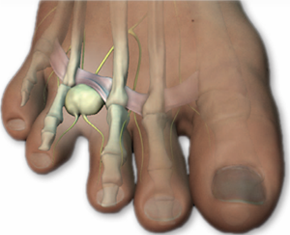KNEE PAIN
 |
| Knee Pain |
 |
| Knee Deformities |
Most commonly people suffering from flat feet are more prone to knock knees (Genu Valgus) deformity in the knee joint which affects outer compartment of knee joint whereas people with high arch are susceptible to bow legs (Genu Varus) deformity which affect the medial compartment of the knee joint.
LIMB LENGTH DISCREPANCY (LLD) & BACK PAIN
The human body is an epitome of balance. If there is any deviation from this balanced state the system go into malfunction. The same holds true while considering the length of lower limb. If there is any difference in the length of the two limbs, it alters the position of the pelvis. This in turn affect the spine resulting in Scoliosis i.e. tilting of the spine on one side.In severe cases along with the spine the ribs also undergo rotation causing a rib hump. Once the vertebral bodies start rotating the spinous processes deviate more & can even compromise the respiratory capacity in sever case.
Treatment:-
If the reason for the scoliosis is LLD then it is advisable to detect the exact length of discrepancy. This can be corrected by adding the exact amount of compensation in the footwear to prevent further deterioration of the spine. Another important aspect is physical therapy intervention to maintain the flexibility & strength.
ACCESSORY NAVICULAR BONE
 |
| Accessory Navicular Bone |
 |
| Accessory Navicular Bone |
Causes:-
- Recurrent trauma to the ankle or foot such as ankle sprain.
- Improper size & pattern of footwear which causes friction against the extra bone.
- reduction in arch.
- Injury to Tibialis posterior tendon.
Symptoms:-
- Redness & swelling over the inner side of the foot in the arch area.
- Pain on palpating the area of extra bone.
- Pain while walking & standing activities.
CALCANEAL APOPHYSITIS
An apophysis is a growth plate which is present at the end portion of the bone when there is no accompanying bone, Calcaneal apophysitis is an inflammatory condition which affects the growth plate present in the heel bone (Calcaneum). It usually occurs in kids falling in the age group of 8-14 years as till the age of 14 years the growth plate continues to grow. Repeated stress or trauma to this sensitive area results in inflammation & damage to the growth plate.
Causes:-
It is most commonly seen in kids participating in sports which result in high impact over the heel area which ultimately damage the still underdeveloped growth plate. Furthermore kids who have other alignment issues such as flat feet or high arch are more susceptible to this damage.
Symptoms:-
- Pain in the heel area.
- Excessive pain on squeezing the sides of heel.
- Pain on standing or walking which become worse as the time increases.
- Limping
- Inability to perform activities such as running, jumping & skipping.

































